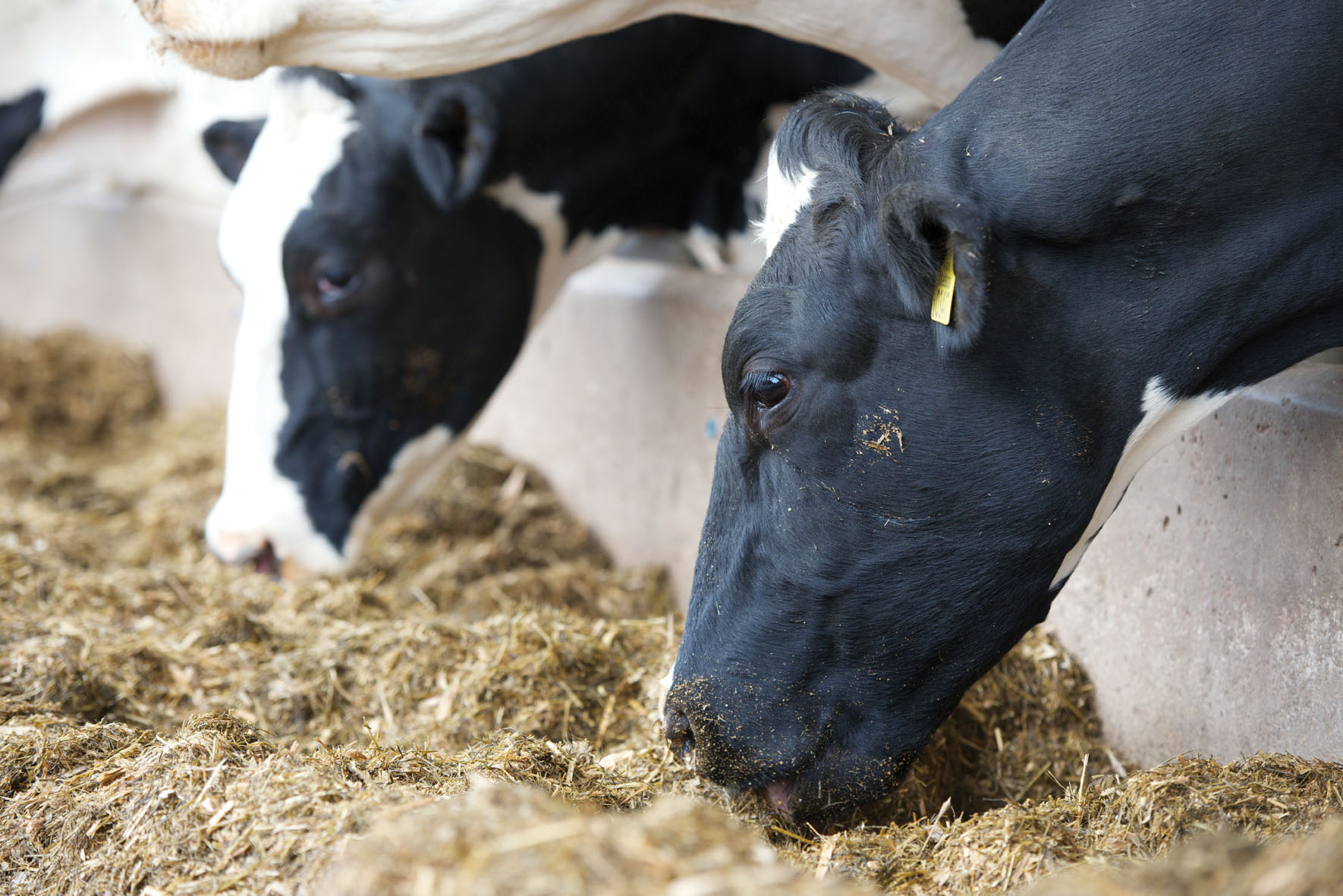Body condition score is critical
Getting cows to calve down in the correct body condition score of 3.0 is a pre-requisite for a successful lactation. Over fat cows at calving have a lower appetite and are more likely to get metabolic disorders such as ketosis and fatty liver disease as they mobilse excessive amounts of body fat to meet energy requirements. This has been shown to delay the ability of the cow to get back in calf.
Over-conditioned late lactation cows need to be dried off early and fed a fibrous, bulky diet until they reach condition score 3-3.25. Similarly, thin cows (less than BCS 2.75) should be fed to increase condition score during this period - something that can be achieved by feeding 2-4 kg head/day of a dry cow concentrate with highly digestible silage or grass until condition score 3 - 3.25 is reached.
Cows in condition score 3 at drying off should be fed to maintain this BCS by feeding a forage silage in conjunction with 4-5 kg of chopped straw to promote high intakes of a low energy diet, which is essential to encourage high intakes post- calving whilst not promoting weight gain. Typical dry cow diets will supply 9 MJ/kg DM and 1,000 - 1,200 grams of metabolisable protein. Dry matter intakes of 13-14 kg should be targeted for Holsteins during the far off period (this will decrease slightly for smaller breeds).
Milk fever
Cows of second lactation and greater are at an increased risk of developing milk fever (hypocalcaemia), which has been described as the gateway disease, as it can predispose cows to other health issues as well as poor fertility due to increased days open. What’s more, on average 70% of multiparous Holsteins and 100% of multiparous Jerseys will experience some form of sub-clinical milk fever.
Where grass silage forms part of the dry cow diet, the relatively high potassium in grass silage can switch off the cow’s ability to recognise that she needs to mobilise calcium. This can be corrected with a quality mineral that will deliver 28–32 grams of magnesium per cow per day. Magnesium, along with vitamin D3, is key in switching on the cow’s hormonal response to mobilise calcium. Where issues with milk fever persist, adjusting the dietary cation and anion difference (DCAD) of the dry cow ration may be an option - something you should discuss with your nutritionist.
Reduce stress
The efficacy of the immune system is reduced by approximately 38% at calving so stress should be avoided during the dry period and particularly during the last three weeks before a cow calves. Stressed cows will have higher concentrations of adrenaline and cortisol in their bloodstream, which depresses appetite and starts fat mobilisation, which is not desirable.
To reduce stress, provide an adequate supply of clean water and enough fresh feed every day to prevent feed bunks becoming empty. Minimise the movement of cows between sheds/pens, particularly in the three week period prior to calving, and avoid overcrowded buildings. Ensure two feet of trough space is provided for each cow in a well-lit, well-ventilated shed, with comfortable, clean, dry bedding, to promote optimal feed intake.
Prepare the rumen
As cows progress through from the dry to transition period, preparing the rumen for the lactation diet is of paramount importance. By week seven of the dry period, the absorptive surface area of the rumen has diminished by approximately 50 per cent as the rumen papillae (nutrient absorption sites in the rumen) shrink during this period. This is coupled with a three fold increase in the demand for glucose between day 250 of pregnancy and day 4 in lactation (Overton et al, 2004). This is further complicated by approximately a 30 per cent decrease in DMI during the transition period, which can contribute to negative energy balance before calving and start the process of fat mobilisation.
As a result, any dry cow strategy at this stage should focus on three main areas:
• The development and elongation of the rumen papillae
• Adaptation of the rumen microbial population to the lactating diet
• Maintaining DMI
Increasing the energy density of the diet by introducing concentrate or cereals at approximately two weeks pre-calving is recommended, as this promotes the development of the rumen papillae, therefore increasing its absorptive surface area, which is vital for the effective absorption of nutrients. Increasing the energy density of the diet at this point will also maintain energy intake when dry matter intakes decrease and it will also serve to adapt the rumen microbes to the lactating diet, which will be energy dense, containing a high proportion of fermentable energy.
The transition period can prove to be a perilous time in a cow’s lactation, as in many instances cows can suffer from digestive upsets such as sub acute rumen acidosis (SARA) due to the inclusion of concentrates and cereals when the rumen is ill adapted to cope with these feeds. Excess acid loading in the rumen during this period is not desirable, as it reduces intakes by impacting on the rumen microbial population, exacerbating negative energy balance which has negative repercussions on health, production and fertility. Including a live yeast such as Actisaf Sc 47 in the diet during this period stimulates the population of beneficial bacteria that degrade starch and fibre, improving feed efficiency and increasing DMI. In priming the beneficial rumen bacteria Actisaf Sc 47 also helps prevent acute acidosis and SARA from occurring. In a nutshell, a successful dry cow period from a nutritional perspective is the key to providing the platform for optimum performance from your herd in the following lactation.

